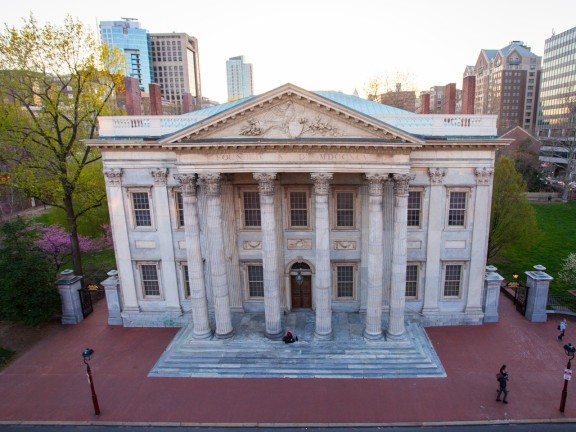First Bank of the United States

The First Bank of the United States, a distinguished National Historic Landmark in Philadelphia, stands as a testament to the early financial foundations of the newly formed United States. Located at 116 South 3rd Street, the bank played a pivotal role in shaping the economic policies of the fledgling nation during its crucial formative years. Chartered in 1791, the First Bank of the United States was the brainchild of Alexander Hamilton, the first Secretary of the Treasury.
Designed by architect Samuel Blodgett, the bank's neoclassical facade exudes an air of architectural significance. The building's imposing columns and intricate details reflect the ideals of the nascent United States, combining practical utility with a sense of classical grandeur. The bank served as the primary depository for federal funds and played a vital role in establishing a stable national currency.
During its operational years, the First Bank of the United States became a center for financial innovation and policy-making. Its influence extended beyond Philadelphia, impacting the nation's economic trajectory. However, debates over the bank's constitutionality and concerns about centralized power led to its charter not being renewed in 1811.
Today, the First Bank of the United States stands as a museum and historic site, allowing visitors to explore the intersection of finance, architecture, and early American history. The building has been carefully preserved to capture the essence of its original design and purpose, offering a glimpse into the economic aspirations of the United States in its earliest years. The site remains an essential stop for history enthusiasts, providing a tangible connection to the economic foundations that laid the groundwork for the nation's financial system.
Address: 120 S 3rd St, Philadelphia, PA 19106
Photo credit: Visit Philadelphia®